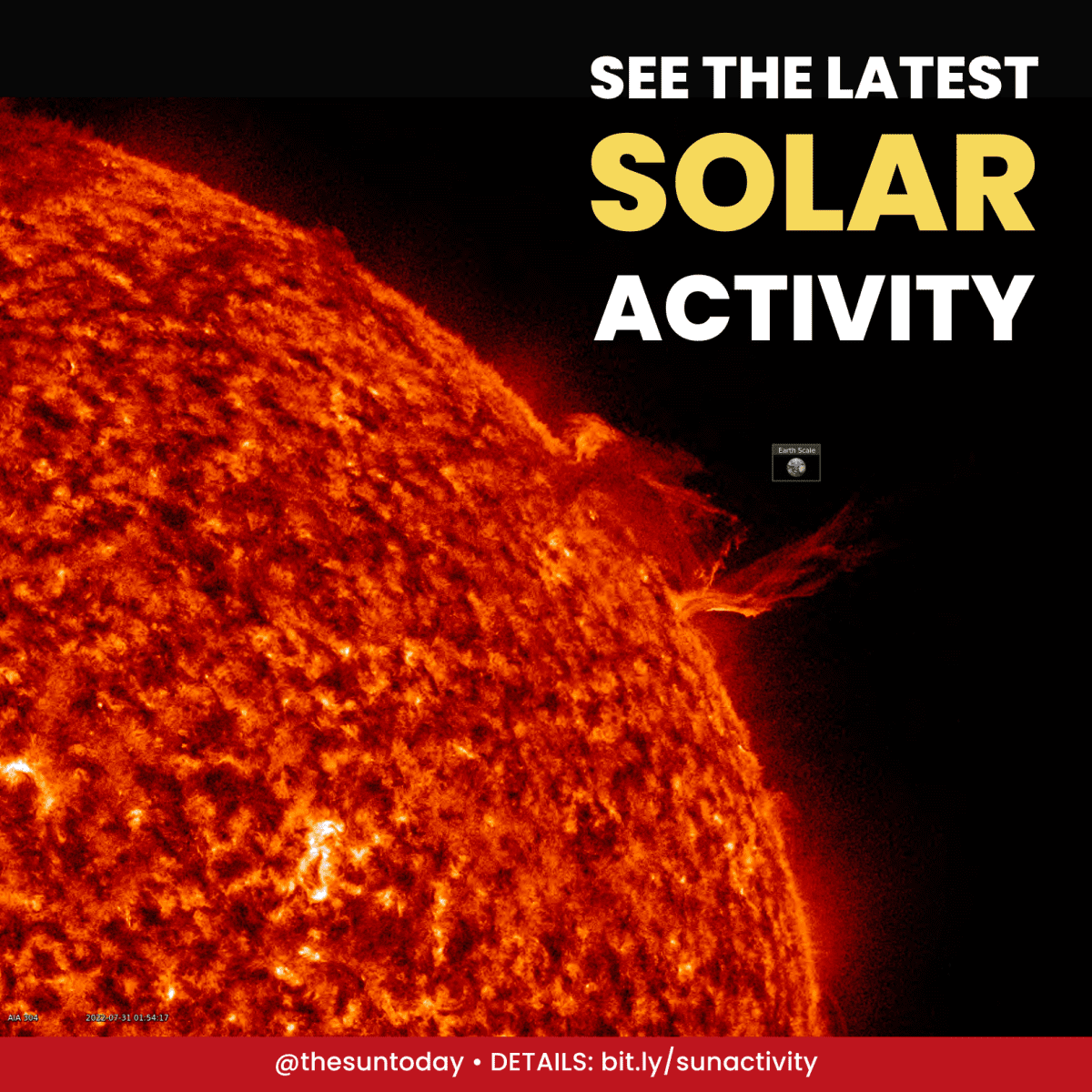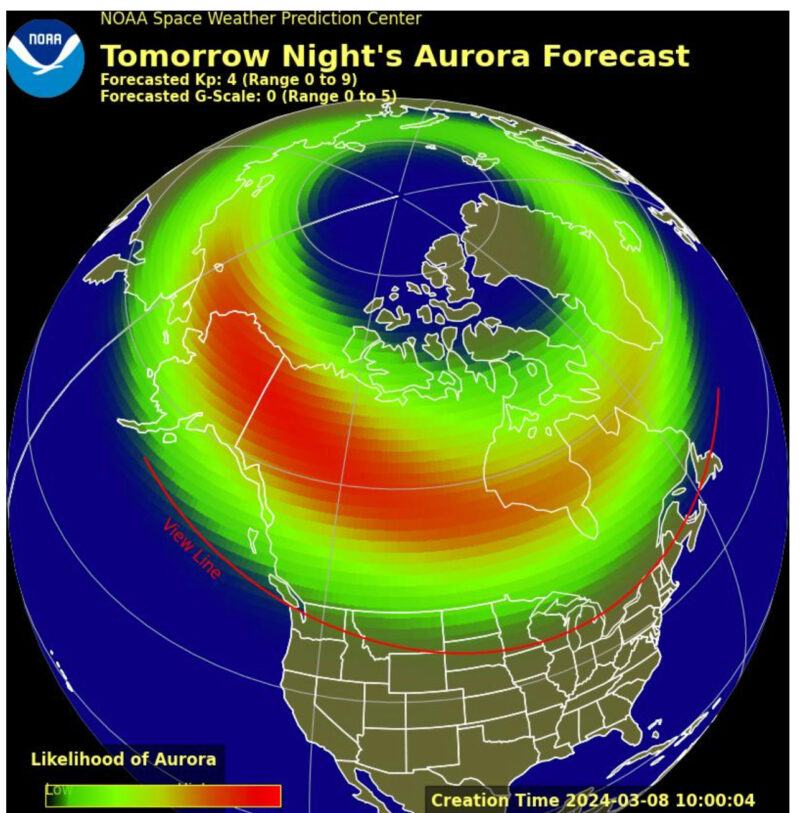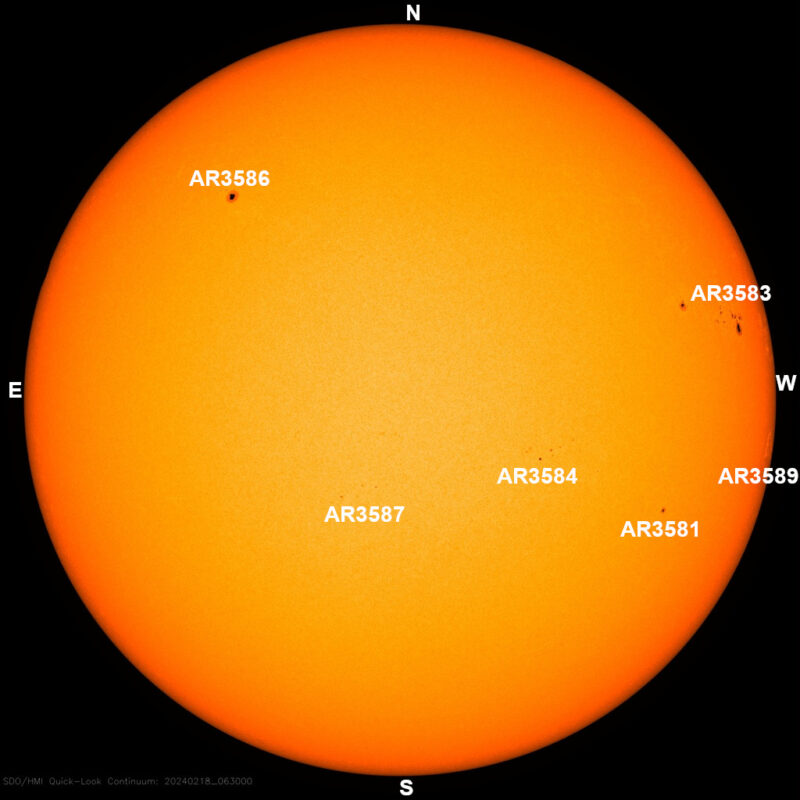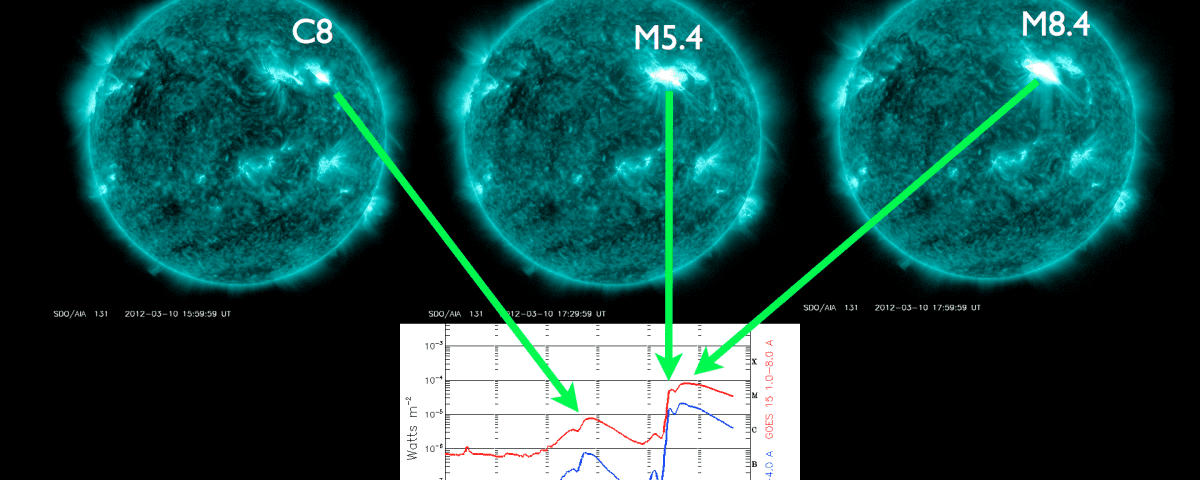
CMEs are on their way to us! Estimated impact is March 11, 2012 around 2-3 PM EDT. High latitude aurora watchers keep lookout the night of March 11, 2012.
On March 10, 2012, the sun produced 1 C-class flare and 2 M-class flares along with 2 Earth directed coronal mass ejections (CMEs). The first flare was a C8 long-duration X-ray blast that peaked at 15:52 UTC (10:52 AM EST) from sunspot group AR11430. This active region is just West (to the right) of the recently busy sunspot group AR11429. AR11429 then produced 2 M-class X-ray flares. An M5.4 and an M8.4 peaking at 17:27 UT (12:27 PM EST) and 17:44 UT (12:44 PM EST) respectively.

Figure 1: The 3 flares (C8, M5.4 and M8.4) are seen on the solar disk by SDO with arrows pointing to the corresponding peaks in the X-ray seen by the GOES X-ray monitor.
Figure 1 shows a trace of the X-ray flares recorded by the GOES X-ray monitor. Images above that plot show the flares labeled in the 131 Angstrom wavelength camera from the SDO spacecraft with arrows from the flare on the Sun to the corresponding peak in the GOES trace. The times on the SDO images do not correspond exactly to the GOES plots because the peak emission in the 131 Angstrom wavelength (extreme ultraviolet) is usually slightly after the peak emission in X-rays.
Radio bursts were observed during the M8.4 flare. The amateur astronomer Thomas Ashcraft in New Mexico recorded a series of radio bursts from the flare in the 21 and 28 MHz radio bands. Figure 2 shows a dynamic spectrum plot (a range of radio frequencies over time) from the flare. You can listen to an audio recording of the radio burst from the audio player below the image of the dynamic spectrum.
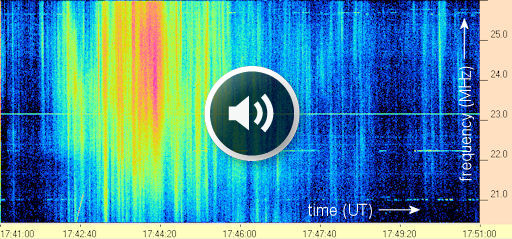
Figure 2: Dynamic spectrum courtesy Wes Greenman, Alachua County, Florida and spaceweather.com (Click the player below to play the audio file)
[mejsaudio src=”https://www.thesuntoday.org/wp-content/uploads/2012/03/m8.mp3″]
The radio burst, called a type IV radio sweep, was caused by solar flare accelerated electrons moving around magnetic field in AR11429. Ashcraft noted, “There is incredible complexity in the waveforms. This is a recording of one of the most turbulent events in all of Nature!”
Along with the C8 flare, AR11430 produced a slow Earthward directed CME, first seen in LASCO C2 at 16:24 UT, traveling around 600 km/s. A faster CME traveling at 1400 km/s was observed in LASCO C2 at 18:09 UT and was associated with the M flares from AR11429.

Figure 3: The 2 CMEs from the March 10, 2012 eruptions seen by the SOHO LASCO/C2 coronagraph. The first panel shows the slower CME form AR11430 and the second panel shows the faster CME from AR11429 coming up behind the slower CME from earlier. Both CMEs are slightly off to the right (West) of center but they are at least partially Earth directed.
The NASA Space Weather Center produced a computer model showing the CMEs traveling basically as magnetized cloud towards Earth.
The 2 CMEs will reach Earth at about 2012-03-12 18:03 UT (2:03 PM EDT) (plus minus 7 hours) which might result in a moderate/strong geomagnetic storm. The estimated maximum Kp index is 5-7 (please note this is a rough estimate).
Our own Dr. Ryan Milligan of Queen’s Univerisity Belfast and the Max Millennium Observing group is reporting that the complexity and size of sunspot group AR11429 remains largely unchanged indicating that the likelihood of more M-class flares is high.



